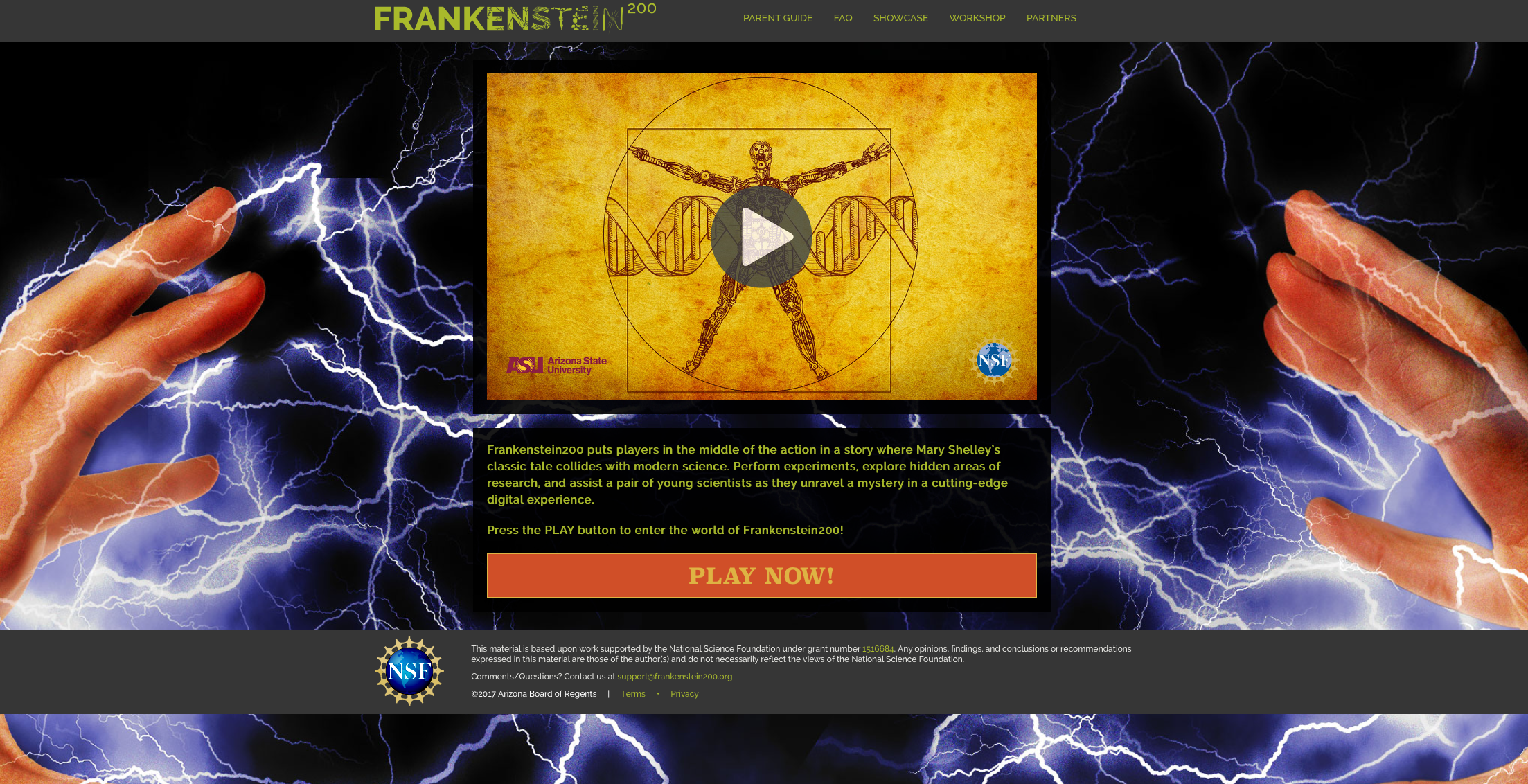The 200th anniversary of Mary Shelley’s "Frankenstein" has ushered in a new creation — but it’s something entirely different than the familiar eponymous creature.
Victor Frankenstein’s legacy lives on as Frankenstein200, an interactive, transmedia experience for children that retells Shelley’s novel through an exploration of science.
The project, developed by a team at Arizona State University with scientific advisement from the Museum of Science in Boston, uses videos, web pages, puzzles and games to follow Dr. Victoria “Tori” Frankenstein and her research assistant, Maya, in their “Laboratory for Innovation and Fantastical Exploration,” or L.I.F.E. for short.
The game contemporizes the novel’s familiar themes of creation through various science and thought experiments, asking participants to examine and reflect on questions such as “What makes us human?” as well as the social and ethical implications surrounding emerging technologies.
An engaging in-person element, which bridges the online story experience, is made possible through physical “maker kits” that contain instructions, guides and videos for hands-on experiments. Maker kits for the game were developed in partnership with the National Informal STEM Education Network and have been awarded to more than 50 museums across the nation, including the Arizona Science Center.
Ed Finn, founding director of the Center for Science and the Imagination at ASU, said that one of his favorite activities from the kits includes the creation of an anthropomorphic creature called a “scribbler," which is created using household objects.
“You give this creature a name, decorate it with googly eyes, attach markers to it and turn it on, and it starts scribbling on paper," said Finn.
Pretty cool, but the project also presents its creator with interesting moral questions, Finn added. "Let’s say the creature you created drew on something really important and caused a lot of damage. … Who would be at fault? Would it be your responsibility or the creature’s?”
Kit experiments, like the scribbler, serve to generate conversations about the deep connection between creativity and responsibility in emerging technologies.
“It’s really important to engage children on these topics now,” said Finn.
Bob Beard, communication and public engagement strategist for the Center for Science and the Imagination, agreed.
“We are currently living in this moment where we have the ability to create things that really change the world in very fundamental ways — high school students are already engaged in creation experiments through robotics, maker activities and synthetic biology competitions like iGEM,” said Beard. “We need to start thinking and having conversations about the implications of what we create and release in the world.”
Finn added that these conversations aren’t limited to fields such as synthetic biology or robotics.
“It’s really about using the Frankenstein story as a thought experiment that we can apply to all sorts of different fields,” he said. “Even if you haven’t heard of Mary Shelley ... everyone’s familiar with the story of Frankenstein and feels comfortable reinventing it for themselves. In that way, it’s a transmedia story, and we can use it to have people talking about science and society now.”
More information about the game can be found at Frankenstein200.org
Frankenstein200 and Frankenstein.life were created by Arizona State University under a grant from the National Science Foundation (award number 1516684).
More Science and technology

ASU professor wins NIH Director’s New Innovator Award for research linking gene function to brain structure
Life experiences alter us in many ways, including how we act and our mental and physical health. What we go through can even change how our genes work, how the instructions coded into our DNA are…

ASU postdoctoral researcher leads initiative to support graduate student mental health
Olivia Davis had firsthand experience with anxiety and OCD before she entered grad school. Then, during the pandemic and as a result of the growing pressures of the graduate school environment, she…

ASU graduate student researching interplay between family dynamics, ADHD
The symptoms of attention deficit hyperactivity disorder (ADHD) — which include daydreaming, making careless mistakes or taking risks, having a hard time resisting temptation, difficulty getting…


